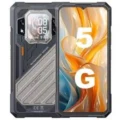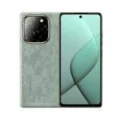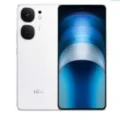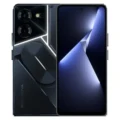Huawei nova 10 Pro


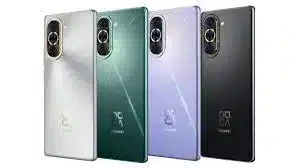


-
: 8GB RAM Snapdragon 778G 4G
-
: 6.78" 1200x2652 pixels
-
: 4500mAh Li-Po
-
: 50MP 2160p
Huawei Nova 10 Pro: Ignite Your Creativity, Elevate Your World
The Huawei Nova 10 Pro isn’t just a phone; it’s a creativity catalyst. Whether you’re a photographer, social media enthusiast, or gamer, this smartphone empowers you.
Capture Every Whisper of Light:
The 50MP RYYB Ultra Vision Camera excels in low light. The 8MP Ultra Wide Macro Camera reveals hidden wonders. The Portrait Depth Camera and AI Photography Assistant enhance your skills in real-time.
Immerse Yourself in a Visual Feast:
The 6.78-inch OLED display is breathtaking. Every pixel bursts with vibrant colors and clarity. The 120Hz refresh rate ensures seamless transitions, making every interaction a delight.
Unleash Unrelenting Performance:
The Qualcomm Snapdragon 778G 4G processor powers through tasks. Multitasking is effortless, even for graphic-intensive games. Experience lightning-fast performance for unrestricted creativity.
Always Ready to Capture the Moment:
The 4500mAh battery lasts all day. The 100W HUAWEI SuperCharge gets you back in action in minutes. Never miss a moment, whether it’s a selfie, video, or gaming triumph.
Style Meets Substance:
The Nova 10 Pro is undeniably stylish. Choose from sophisticated colors with a design that blends aesthetics with functionality. The phone feels light, complementing your unique style.
Beyond the Phone, a Connected Ecosystem:
Seamlessly integrate with your Huawei ecosystem. Control smart home devices, collaborate across devices, and experience a truly connected mobile environment.
Whether capturing visuals, immersing in entertainment, or unleashing creativity, the Huawei Nova 10 Pro is your perfect companion. Don’t just use technology; ignite your creativity and captivate the moment
Want to Learn More?
Visit the official website of Huawei for detailed information about the Huawei nova 10 Pro: Huawei Official Website
Still Unsure?
If you’re still unsure about your choice, explore other options from Huawei at your nearest store: Huawei Store
Specs
Network
| 2G Network GSM 850 / 900 / 1800 / 1900 - SIM 1 & SIM 2 (dual-SIM) CDMA 800 / 1900 |
GSM 850 / 900 / 1800 / 1900 - SIM 1 & SIM 2 CDMA 800 |
| 3G Network | HSDPA 800 / 850 / 900 / 1700(AWS) / 1900 / 2100 |
| 4G Network | 1, 2, 3, 4, 5, 8, 18, 19, 26, 34, 38, 39, 40, 41 |
| Speed | HSPA, LTE-A |
LAUNCH
| Announced | July, 2025 |
| Status | Available. Released 2022, July 10 |
BODY
| Dimensions | 164.2 x 74.5 x 7.9 mm (6.46 x 2.93 x 0.31 in) |
| Weight | 191 g (6.74 oz) |
| SIMs SIM (Subscriber Identity Module) is a small card that contains mobile network subscriber's account information. This allows the phone using the card to attach to a mobile network. The SIM card is most commonly associated with GSM and UMTS mobile networks. Moving a SIM card from one phone to another allows a subscriber to switch mobile phones without having to contact their mobile network carrier. SIM cards can also be used by a phone to store limited amounts of data, such as phone numbers and text messages. | Dual SIM (Nano-SIM, dual stand-by) |
Display
| Display Type Display Technology => A number of display technologies and types used in mobile phones => TFT (Thin Film Transistor), IPS (In-Place Switching), OLED (Organic Light Emitting Diode), AMOLED (Active-Matrix Organic Light-Emitting Diode), Super AMOLED (an even advanced version of AMOLED), Resistive Touchscreen (Resistive touchscreens contain two layer of conductive material with a very small gap between them which acts as a resistance), Capacitive Touchsceen (Capacitive touchscreen technology consists of a layer of glass coated with a transparent conductor) | OLED, 1B colors, HDR10, 120Hz |
| Size | 6.78 inches, 111.4 cm2 (~91.1% screen-to-body ratio) |
| Resolution | 1200 x 2652 pixels (~429 ppi density) |
PLATFORM
| Operating System OS => Every computer system run on a base software called Operating System (OS). Operating System controls all basic operations of the computer (such as smartphone, PDAs, tablet computers and other handheld devices). The Operating System allows the user to install and run third party applications (apps), apps are used to add new functionality to the device. | HarmonyOS 2.0 |
| Chipset Chipset is a group of integrated circuits designed to perform one or a more dedicated functions, often with real time computing constraints, Popular smartphones are equipped with more advanced embedded chipsets that can do many different tasks depending on their programming. | Qualcomm SM7325 Snapdragon 778G 4G (6 nm) |
| CPU CPU (Central Processing Unit) mostly known as processors, CPU processes instructions in order to carry out certain functions that make your device operate properly. Processors are often described as the brain of computers, smartphones and tablets, Smartphones and tablets rely on processors to carry out their every task, Processors are an incredibly important factor in selecting any type of computing device, including your smartphone. | Octa-core (4x2.4 GHz Kryo 670 & 4x1.8 GHz Kryo 670) |
| GPU GPU (Graphics Processing Unit) is a single-chip processor designed to rapidly manipulate and alter memory to accelerate the creation of images in a frame buffer intended for output to a display, This includes things such as lighting effects, object transformations, and 3D motion. | Adreno 642L |
MEMORY
| Card Slot Memory Card Slot is a special slot for inserting a memory card. Memory cards allow you to expand the phone's built-in memory, A memory card (sometimes called a flash memory card or a storage card) is a small storage medium used to store data such as text, pictures, audio, and video, for use on small, portable or remote computing devices such as mobile phones, mp3 players, digital cameras. | No |
| Internal | 128GB 8GB RAM, 256GB 8GB RAM |
MAIN CAMERA
| Cameras Specs Today’s smartphones come equipped with a very comprehensive set of camera related specifications. Our smartphone, for many of us, has become our primary camera due to it being the one we always have with us. |
50 MP, f/1.8, 27mm (wide), PDAF 8 MP, f/2.2, 112˚ (ultrawide), AF 2 MP, f/2.4, (depth) |
| Video | 4K, 1080p, 720p@960fps, gyro-EIS |
| Camera Features | LED flash, panorama, HDR |
SELFIE CAMERA
| Cameras Specs Today’s smartphones come equipped with a very comprehensive set of camera related specifications. Our smartphone, for many of us, has become our primary camera due to it being the one we always have with us. |
8 MP, f/2.2, 52mm (telephoto), AF, 2x optical zoom 60 MP, f/2.4, 17mm, 100˚ (ultrawide), AF |
| Features | HDR |
| Video | 4K@30fps, 1080p@30fps, gyro-EIS |
SOUND
| Loudspeaker | Yes, with stereo speakers |
| 3.5mm jack | No |
COMMS
| WLAN |
Wi-Fi 802.11 a/b/g/n/a/6, dual-band, Wi-Fi Direct |
| Positioning | GPS (L1+L5), GLONASS (L1), BDS (B1I+B1c+B2a), GALILEO (E1+E5a), QZSS (L1+L5), NavIC (L5) |
| Bluetooth Bluetooth is a wireless communications technology for exchanging data between mobile phones, headsets, computers and other network devices over short distances without wires, Bluetooth technology was primarily designed to support simple wireless networking of personal consumer devices. | 5.2, A2DP, LE |
| Infrared Infrared connectivity is an old wireless technology used to connect two electronic devices. It uses a beam of infrared light to transmit information and so requires direct line of sight and operates only at close range. | |
| USB | USB Type-C 2.0, OTG |
| NFC NFC (Near field communication) is a set of standards for smartphones and similar devices to establish peer-to-peer radio communications with each other by touching them together or bringing them into proximity, usually no more than a few inches. | |
| Radio |
Features
| Sensors Sensors are electronic components that detects and responds to some type of input from the physical environment. The specific input could be light, heat, motion, moisture, pressure and location, The output is generally a signal that is converted to use in computing systems, a location sensor, such as a GPS receiver is able to detect current location of your electronic device. |
Fingerprint (under display, optical), accelerometer, gyro, compass Virtual proximity sensing |
BATTERY
| Battery Type Battery Type => Cell phones run on various kinds of batteries depending on the manufacturer, phone size or shape and features. There are basically four types of cell phone batteries => Lithium Polymer, Lithium Ion, Nickel Metal Hydride and Nickel Cadmium. | Li-Ion (Lithium Ion) |
| Charging The functionality responsible for recharging batteries in portable devices, such as mobile phones, significantly influences both battery lifespan and the practicality of daily product usage. The charging process, encompassing factors like voltage, current, and completion actions, is contingent upon the battery's size and type. Contemporary battery chargers dynamically adjust charging parameters based on the battery's current charging state. Charging an empty battery poses no safety risk, allowing for a quicker charging process. Consequently, many charging speed benchmarks, including ours, specify the battery level achieved after a 30-minute session on an empty battery. Standard chargers with a power output of 5V/1A, equivalent to 5W, serve as a baseline, with anything surpassing this speed classified as quick or fast charging. | 100W wired, 20-80% in 10 min (advertised) Reverse wired |
MISC
| Colors |
Black, Silver, Green, Violet |
| SAR EU Each GSM handset has a radio transmitter and receiver in order to operate in the wireless GSM network. That transceiver is manufactured so that when used next to the ear and when worn on the belt, it won't exceed the limits for exposure to radio frequency energy set by the authorities. The authorities in question here are the Federal Communications Commission (FCC) of the U.S. Government, Industry Canada of the Canadian Government (IC), and the Council of the European Union. | GLA-AL00, GLA-LX1 |
| Price | About 730 EUR |
TESTS
| Performance |
AnTuTu: 528847 (v9) GeekBench: 2794 (v5.1) GFXBench: 23fps (ES 3.1 onscreen) |
| Display | Contrast ratio: Infinite (nominal) |
| Loudspeaker | -27.7 LUFS (Good) |
| Battery (old) | Endurance rating 89h |
Reviews
Disclaimer Note
We strive to maintain accurate and up-to-date content on our website for general information purposes only. Please refrain from using the material for business, legal, or any other decisions.






